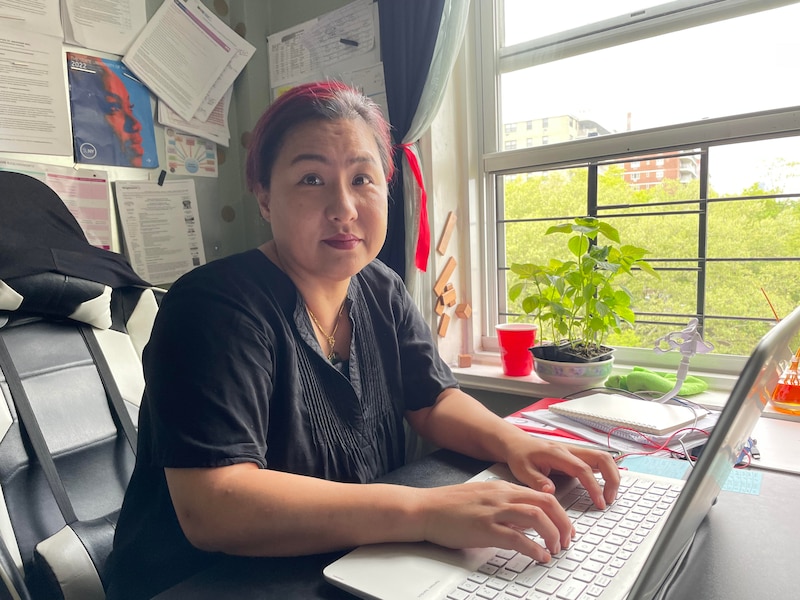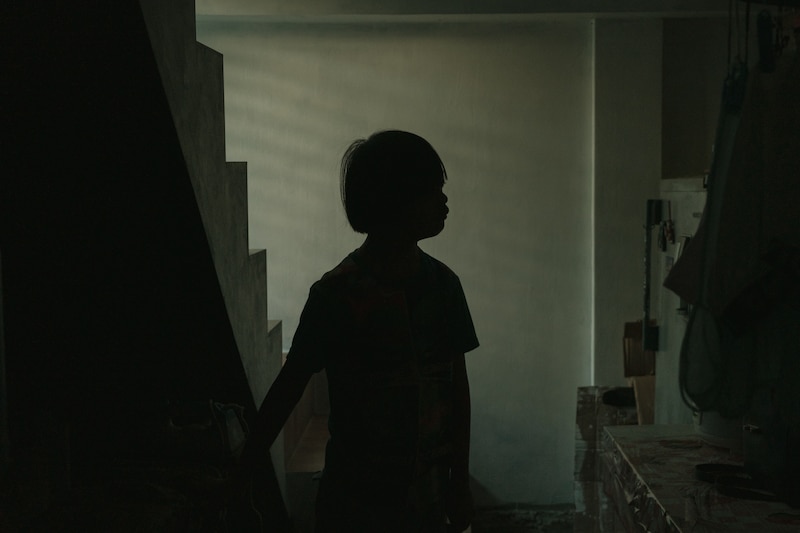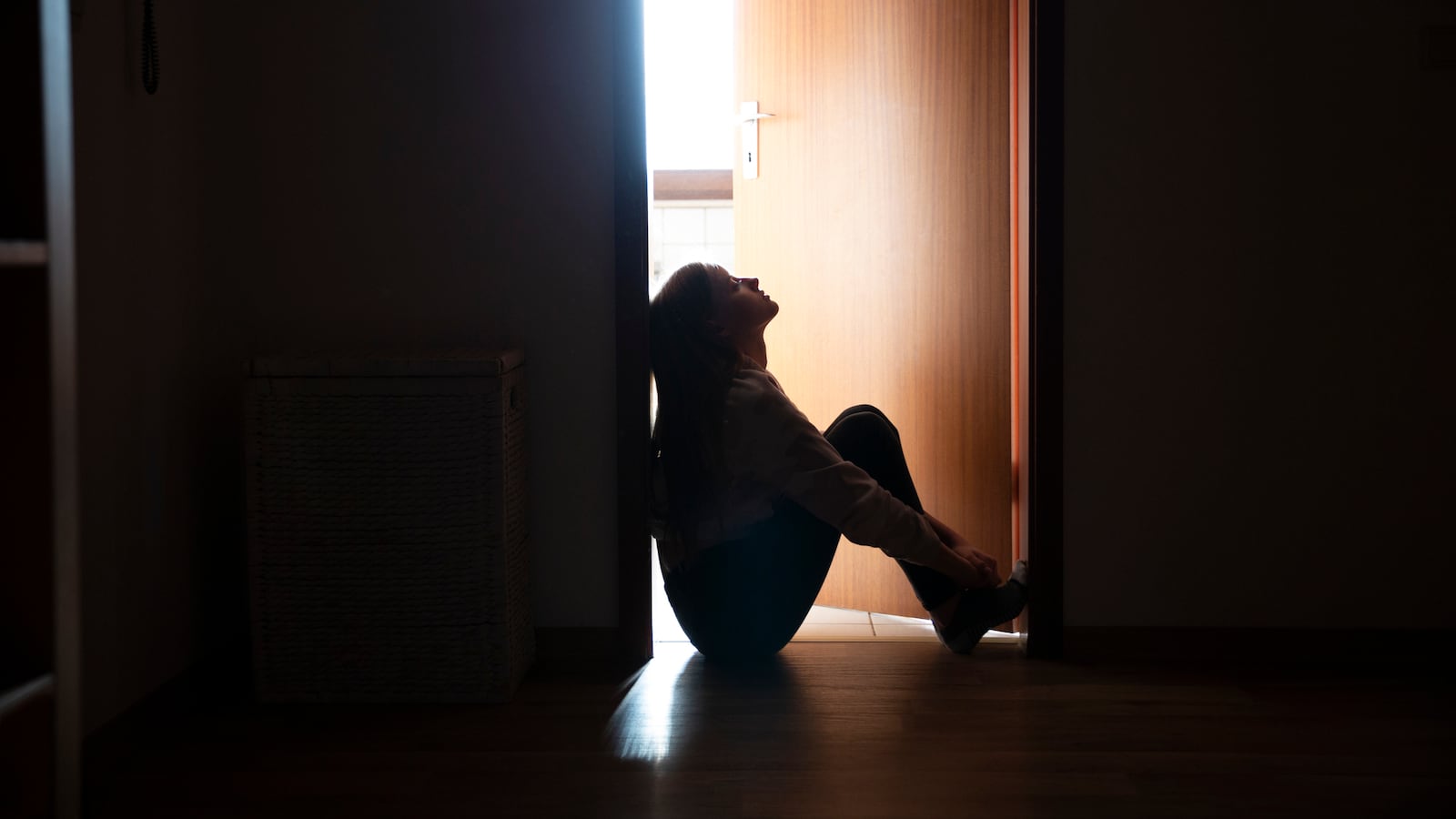Chalkbeat is a nonprofit news organization covering public education in communities across America. Sign up for Chalkbeat New York’s free daily newsletter to keep up with NYC’s public schools.
Every morning raises a stressful question for Lori: Will her son go to school?
Most days, the answer is no.
Her eighth grader, Scott, has not attended school for a full day or entire week since mid-January.
“He said he hates math, he hates school, and doesn’t want to go,” said Lori, a single mom from Staten Island who asked to use middle names for privacy reasons. “There are mornings where he would get dressed and go, but not get out of the car. Sometimes he doesn’t leave the house.”
The school year at I.S. 7 started smoothly for Scott, who is on the autism spectrum. His teachers heaped praise on him, and he seemed to be making friends, Lori said. But by November, he had been sick several times, and he missed half the month.
He never got back on track.
Many children have days where they dread school or try to get out of going at some point in their academic career. But Lori’s son and other children like him are suffering from an extreme aversion to being in the classroom that clinicians call school refusal.
Studies estimate about 1 to 5% of children nationwide exhibited signs of school refusal before the pandemic. Experts, parents, and educators told Chalkbeat they believe coronavirus shutdowns worsened the problem. Many children learned outside of school buildings for an extended period of time, while instances of anxiety and depression — disorders often associated with school refusal — skyrocketed.
Post-pandemic statistics for school refusal aren’t available, and it can be hard to untangle whether mental health issues are impacting attendance since they can manifest in physical symptoms like stomach aches. But observers wonder if post-pandemic school refusal is contributing to the city’s soaring absenteeism rates. Education department officials estimate that by year’s end, 37% of the students in kindergarten through 12th grade could be considered chronically absent, defined as missing at least 10% of the school year. That is significantly higher than in 2018-19, the year before the pandemic, when it reached 26%.
An increase in school refusal following campus closures stands to reason, since experts say the problem can be triggered by absences, illnesses, or major transitions like starting a new school. COVID rates continue to be high in New York City, leading to prolonged periods away from school for ill students as well as students exposed to the virus by classmates (though quarantine rules have been relaxed in recent months). And remote learning led to a longer-than-normal feeling of transition for students who enrolled in new schools but spent limited amounts of time there.
Students refusing to attend school can drain and frustrate educators and parents alike. Without any official city guidance on how to approach refusal, the response from school administrators ranges from deep partnership with families to little or no involvement. Parents, meanwhile, can find the problem emotionally and financially taxing, interfering with their work and leading to expensive therapy bills.

Schools and families need more guidance beyond the patchwork of strategies being used now, according to Jenn Choi, a Queens mom whose child has avoided school this year. She also runs Special Support Services, a consulting firm for families of students with disabilities, and recently surveyed 140 families experiencing school refusal, finding that most of their children— some 57% — had not avoided school prior to the pandemic.
Under education department policy, if a student is out 10 or more consecutive days, interventions such as home visits should be triggered. But many of those surveyed said their children have been refusing school intermittently.
Only 14% of respondents reported that an attendance teacher called or visited the home. Roughly 11% of the families said their children’s school took no action.
“The response has not been consistent,” Choi said. “There needs to be some protocol or threshold. If the student goes to the nurse’s office five times in one week, we need to do something.”
Education department officials say that schools closely monitor attendance trends, identify reasons for a student’s absence, and offer interventions such as mentors and social-emotional support for students at risk of chronic absenteeism.
“While school aversion is just one of many reasons why a student might be absent, we are taking extra steps to ensure that this does not become a contributor to chronic absenteeism,” said education department spokesperson Nicole Brownstein. “We are offering targeted interventions for students who are identified as being at risk for school aversion-related chronic absenteeism through guidance counselors, social workers, attendance teachers, and staff.”
A gradual approach
Even though Amanda Abry worked hand-in-hand with her son’s middle school to help him return to the classroom, the Brooklyn mom ended up using 12 weeks of family medical to make that happen.
Returning to Charles O. Dewey Middle School in the fall of 2021 was overwhelming for her seventh grader. Last year, he attended school only a couple days a week, if at all, because of the hybrid schedule and COVID-related closures. Additionally, he switched to taking two subways every day from Cobble Hill to the Sunset Park school, a departure from the yellow bus service he was entitled to as a sixth grader.
The school made efforts to cut transitions for students, allowing them to remain in one room throughout the day, with the teachers pushing in instead of kids changing rooms between periods. Still, by October, Abry’s son started missing one or two days a week.
By November he stopped going entirely, saying he was getting stomach aches. The therapist at Dewey’s school-based health clinic was only accessible when Abry’s son was in the building. A therapist from the school was willing to do virtual sessions, but the seventh grader refused the offer. By December, he was able to start seeing a cognitive behavior therapist in private practice, and his mom and dad got parent coaching.
The school followed the gold standard of what’s recommended in easing a student back. He was allowed to enter just the lobby. Then he worked up to attending half days. Finally, after nearly three months, he was able to go to his dreaded science class and attend five days a week.
This approach is in line with advice from Dr. Stephanie Ruggiero, a psychologist in the ADHD and Behavior Disorders Center at the Child Mind Institute, who said schools should work with families on a plan that gradually exposes the child to being back, slowly building their tolerance over time.
A school might allow the child to attend one or few classes before working up to a full day. Schools should create tailored plans based on a child’s needs, she said, and since missed assignments can be another source of anxiety, parents should discuss whether schools can give extensions or excuses for certain coursework.

‘Embarrassed about how far behind he is’
Sally traces her seventh grade son’s school refusal back to starting middle school in the pandemic and other personal struggles. He was tired for months after getting COVID in November 2020, and he began exhibiting signs of depression after his older sister’s suicide attempts. (The mom asked to use a family nickname as she works to improve her relationship with her son’s school.)
“He is very embarrassed about how far behind he is. Unfortunately, more days out leads to more school refusal, and it is very hard to get kids like this re-engaged.”
This year, her son has missed too many days for his mom to count. Since January, he has made it twice a week, at most, and those days were not necessarily full days. In April, as he was starting to get momentum in returning, another bout with COVID interfered, and then a few weeks later, he was hit with another illness. When he was in school, her son got into altercations with peers. After a STEM class became challenging, the teachers offered her son catch-up help at lunch, but his mom didn’t want him to lose the socialization time after a year away from other kids. They suggested that her son had “cabin fever,” making her feel they were dismissive.
“He is very embarrassed about how far behind he is,” she said. “Unfortunately, more days out leads to more school refusal, and it is very hard to get kids like this re-engaged.”
The 800-seat school brought in a counselor this fall dedicated to mental health, the mom said. But it wasn’t enough, and the school hired another recently. That new counselor is arranging for her son to do some of his work in her office because he was having panic attacks when entering classrooms, Sally said.
The approach has started working. In the past few weeks, he’s gone into the building three times, sometimes spending much of the day in the counselor’s office.
“There are days when I’m lucky if I can get him out of bed. Is it fair they have to be de facto counselors?” Sally said of teachers. “No, but you’re sending them into a war zone without armor. They don’t know how to recognize suicidal ideation, anxiety, and depression.”
Getting back in the building as quickly as possible
Unlike Sally, whose son did not exhibit signs of school refusal before the pandemic, Lori’s son, Scott, began avoiding school a few months before coronavirus shuttered school buildings. He had just started sixth grade at I.S. 7, which declined to comment for this article, after spending elementary school in a gifted and talented program where he was essentially with the same children since kindergarten.
At the new school, Lori’s son experienced bullying, she said, and an incident during recess ended in her son and another student getting in-house suspension.
After that, it became more common that Scott visited the nurse for stomach aches and asked to go home. Then the stomach ache complaints started first thing in the morning, to avoid going to school altogether.
The problem, however, receded and his anxiety lessened when school buildings closed, and he remained fully remote the next year due to health concerns.
When children stop attending school and see their anxiety melt away, it can be harder to get them back into the building, according to Ruggiero, the psychologist.
“The more you are avoiding something, if you are overwhelmed with fear, you get that temporary relief from avoiding it,” she said. “The avoidance makes it go away. But the problem is, we lose our ability and confidence to cope by not facing it.”
It’s critical to get children back into the school building as quickly as possible, even for a few minutes a day, experts say, advising parents to take away things that make being home appealing, like video games.
In Lori’s case, the school devised a plan in March. An attendance specialist arrived at their house in the morning, drove behind Lori’s car to school, and then escorted Scott inside the building. That worked for about a week before Scott said he could go into the building on his own. After a day or two, the middle schooler was back home.
Earlier this month — and nearly five months after Scott stopped attending regularly — the school created a new plan to initially allow him to attend just science and social studies, which are led by his favorite teachers. They offered to change his math class, the course that has been his biggest hurdle.

Dr. Chelsey Rosen, a therapist at the Manhattan Psychology Group, is a former school psychologist and understands that schools can often be stretched thin, making it difficult for them to come up with personalized plans for students.
Though schools have talked about implementing more social-emotional learning this year, Rosen worries they haven’t had enough training on deeper work, such as behavior management. Additionally, schools might not have the wherewithal to tailor a plan to gradually reintroduce a student back into the classroom, which often relies on a dedicated staffer to be the point person supporting that child.
“I do feel like schools are trying in many ways,” she said. “They’ll throw in social-emotional learning, but they’ll just do a 10-minute thing on mindfulness — not that mindfulness isn’t good — but they’re just checking a box.”
For Abry, the Brooklyn mom whose son stopped attending seventh grade, there are still tough moments, and Abry herself gets drained by the strain of coaxing her son back into school each day. But she feels like her son is on the other side of the mountain.
“It’s wonderful to see him blooming again,” Abry said. “It’s been nice seeing him re-engage with the world.”
Amy Zimmer is the bureau chief for Chalkbeat New York. Contact Amy at azimmer@chalkbeat.org.

